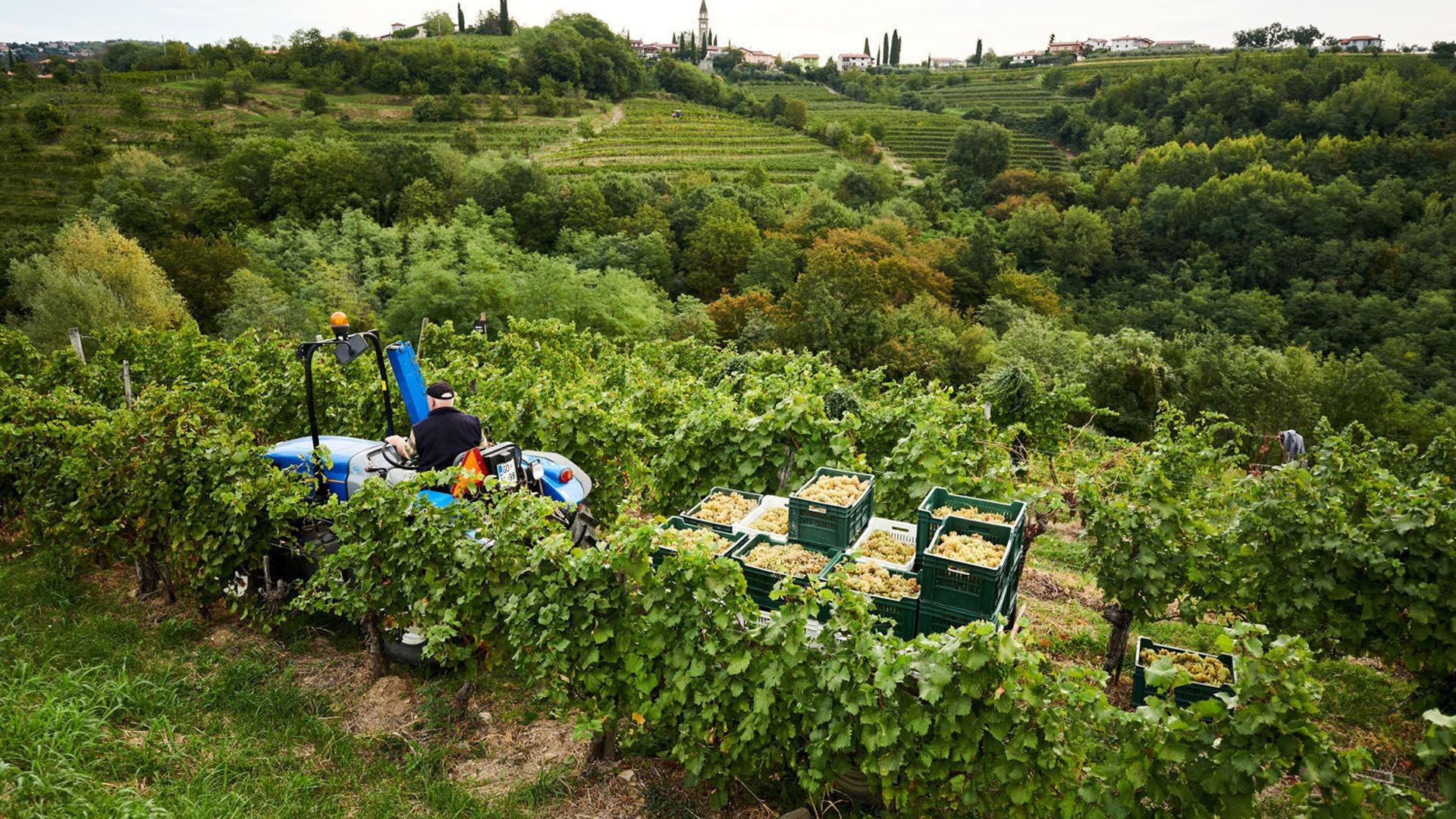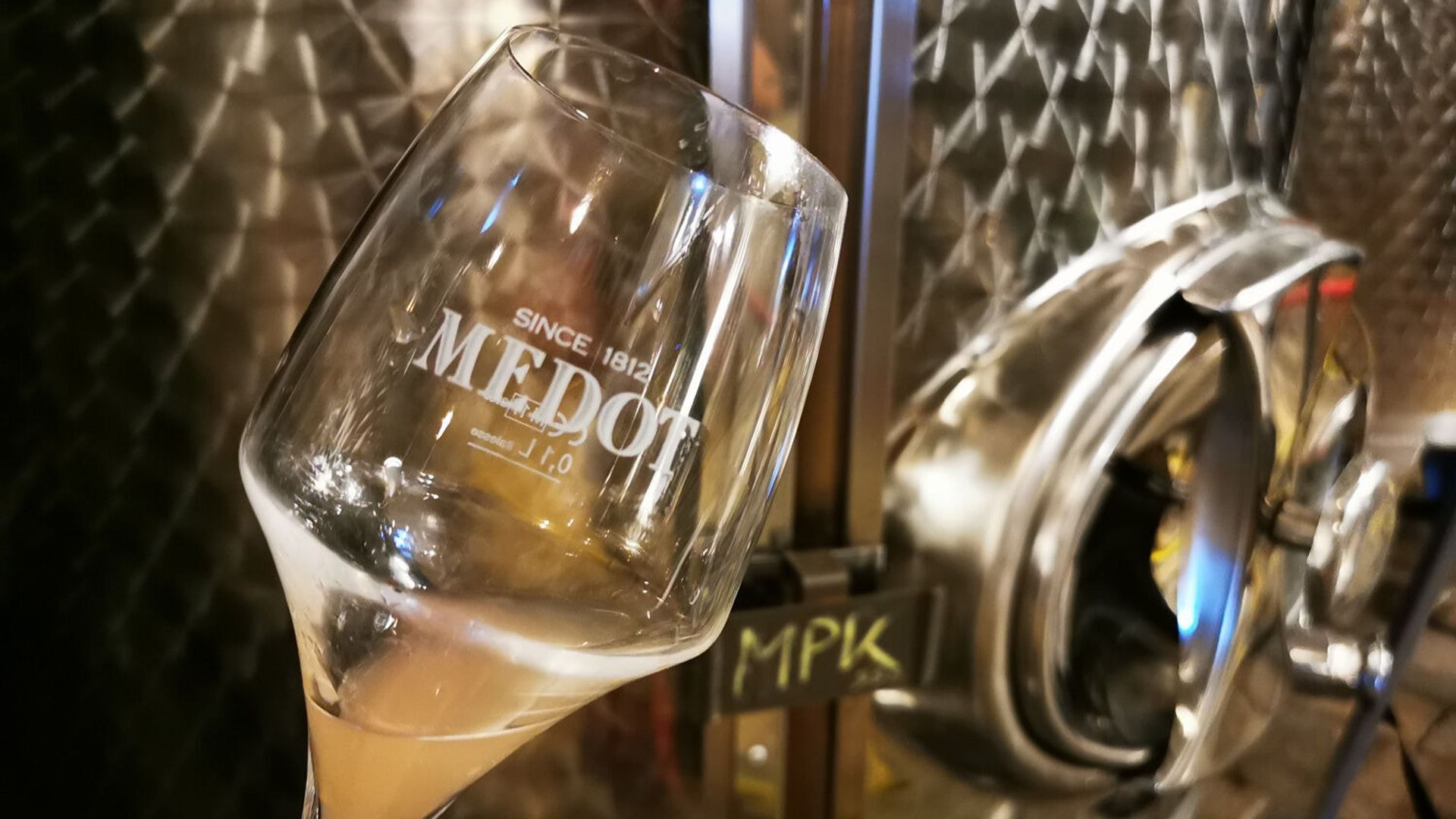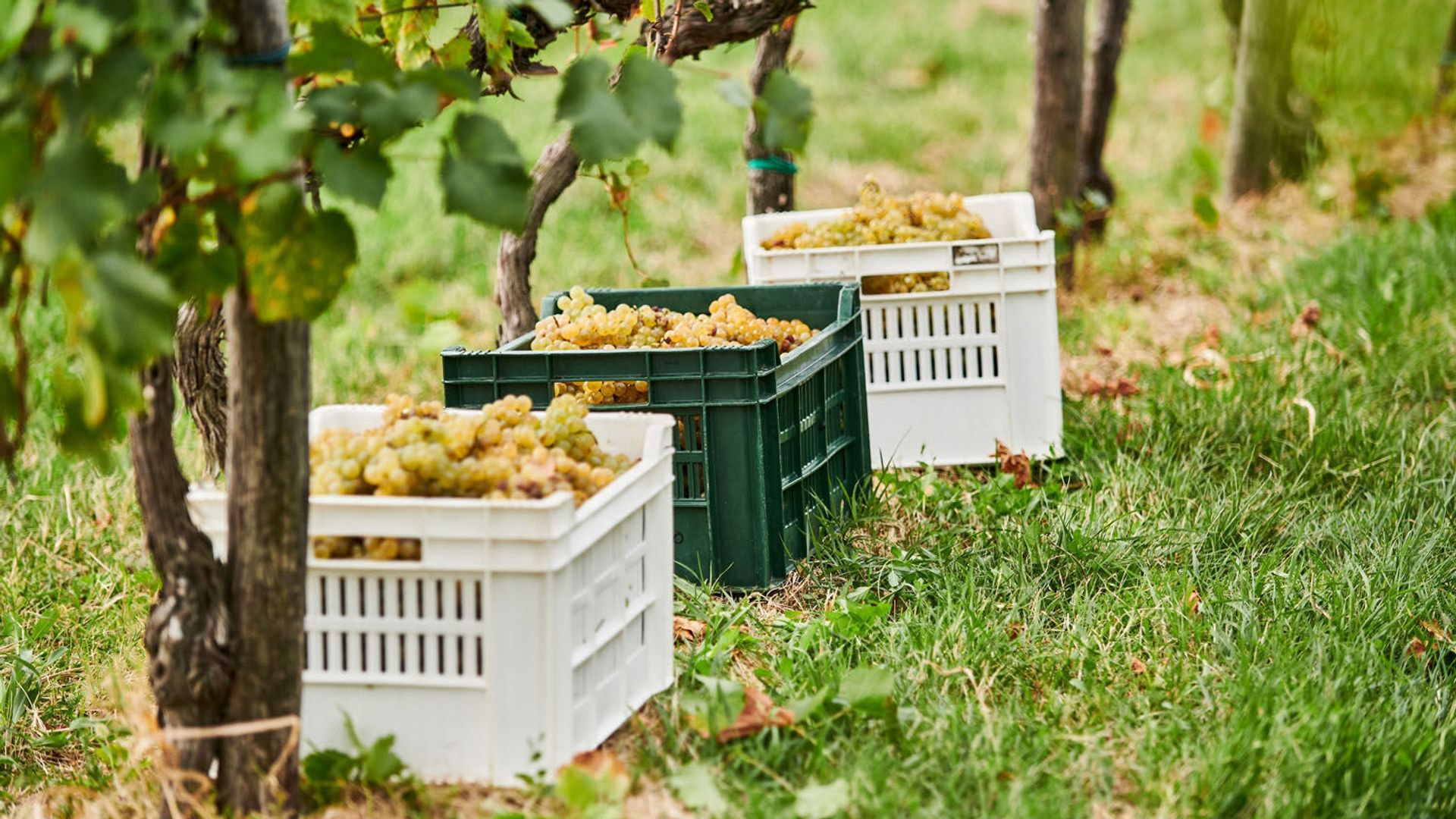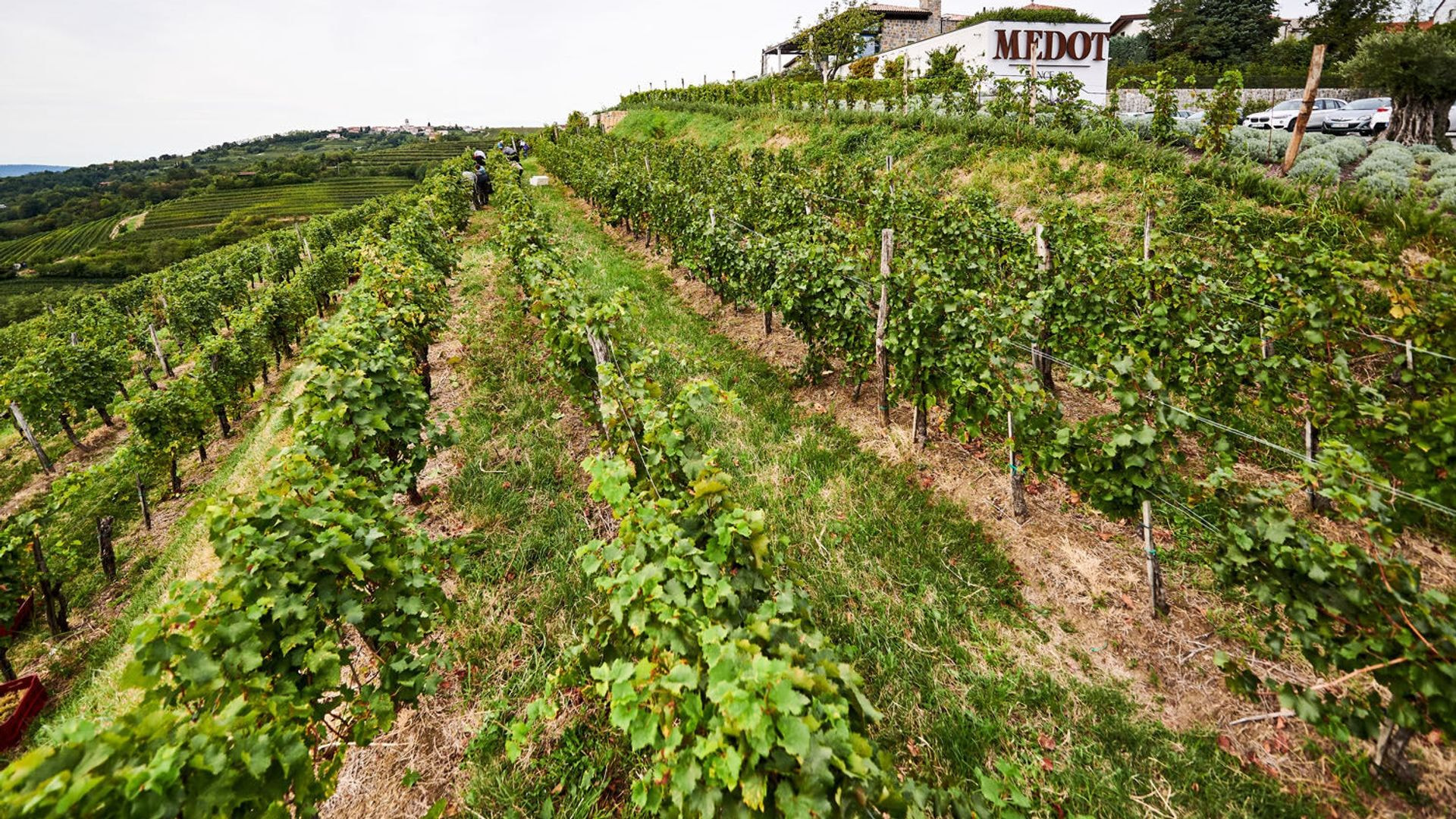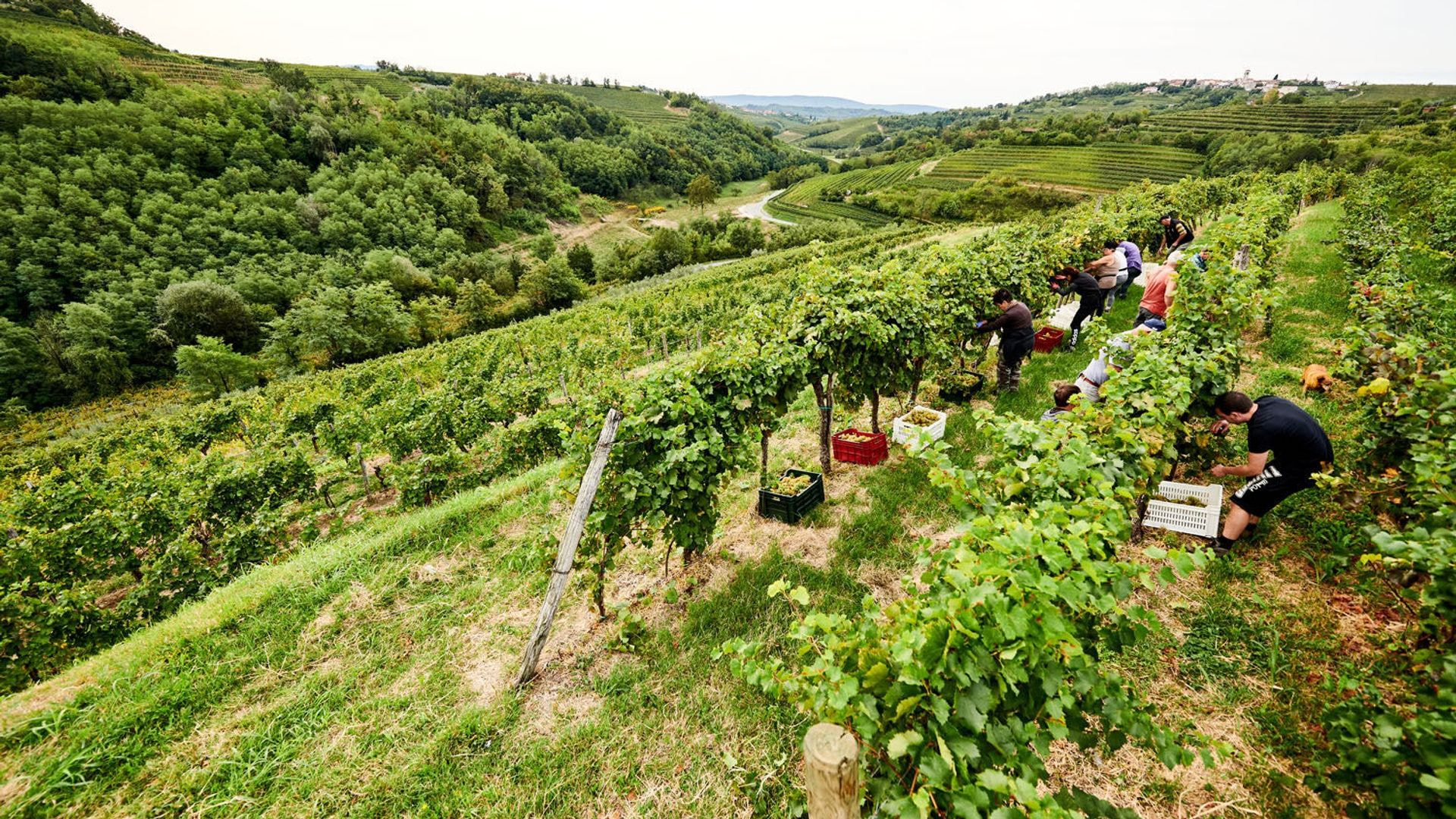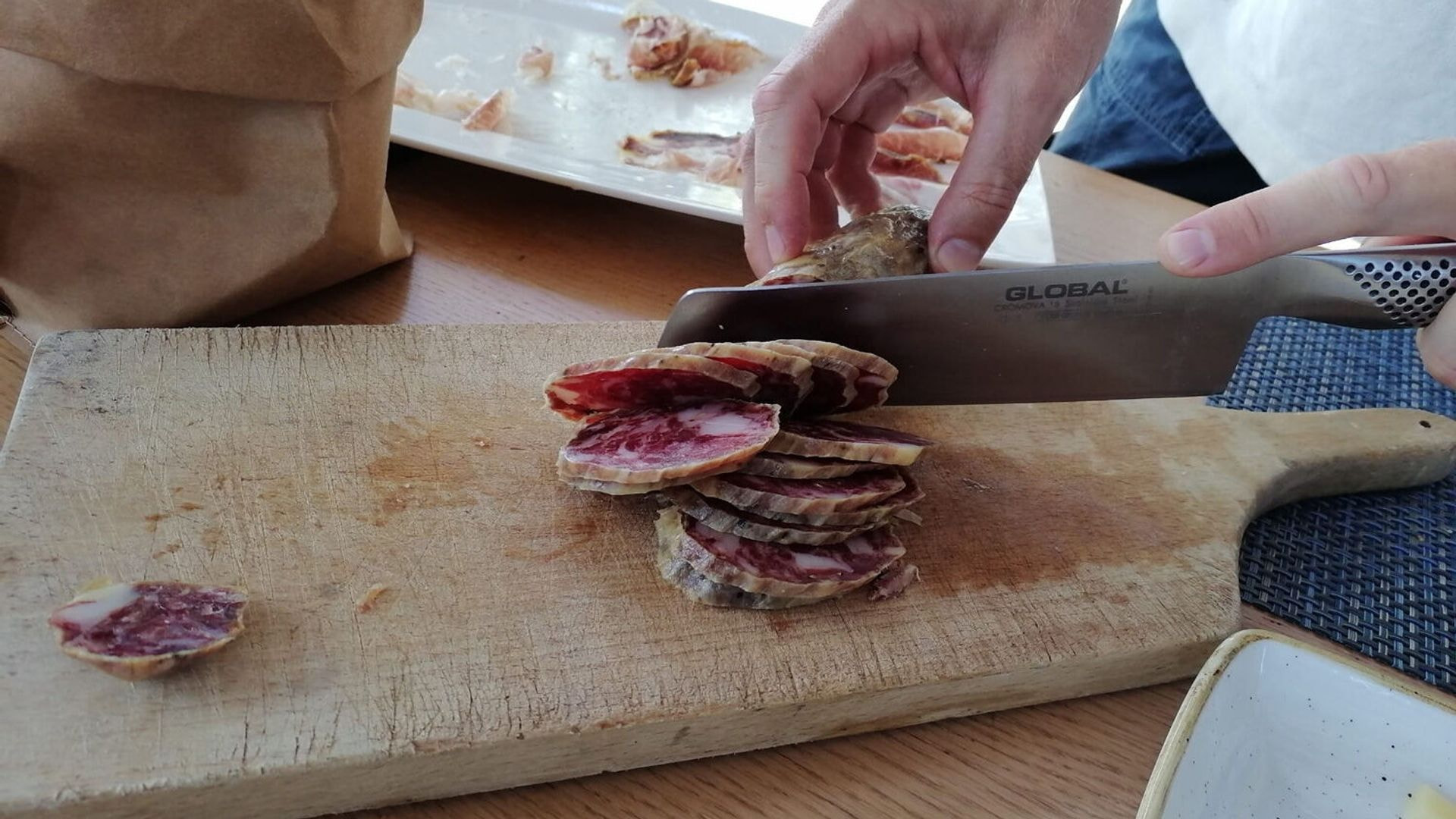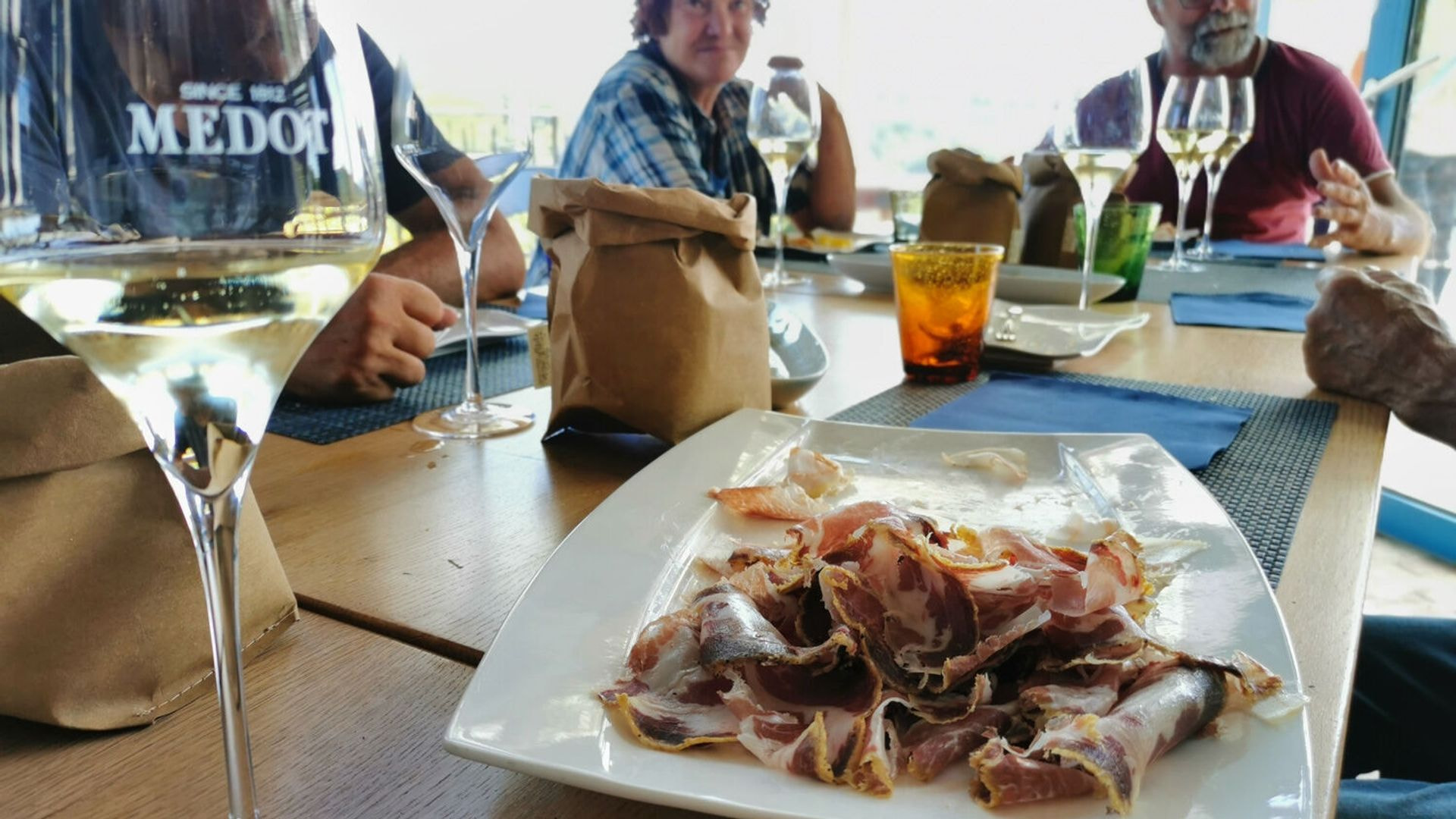On Thursday morning, owner Simon, oenologist Luka and cellar master Sandi arrive at the winery earlier than usual. The weather forecast is also excellent, it will be a beautiful, sunny and hot day, which means that the harvest must start as soon as possible. "We always make sure that we have a large enough team of pickers so that the grapes are picked before midday, when the temperatures are not too high. The grapes must not overheat, it is important that they are cool when they reach the press to preserve the aromas." The crates are quickly ready, the scissors and refreshments are ready, and the arriving workers park in a coordinated manner so as not to take up the driveway, where a tractor will soon be taking away filled crates of freshly picked juicy rib vine grapes from the vineyard.
Harvest: "A fantastic vintage for sparkling wines this year."




As the long-standing director of the Brda Cooperative Winery, he devoted his entire professional life to raising the profile and quality of rebula, creating the bestselling wines of his time, such as the Golden Rebula and the Sparkling Rebula. In Brda, his decades of guidance and leadership of the wine profession are remembered as golden times, but even today there remains a special bond among people of Brda, unlike anywhere else, which dictates cohesion and cooperation.

Meanwhile, down below, several metres below the cabinet, in the tanks of the Medot cellar, the freshly racked must is beginning its long, long journey. First, next year it will become wine, then it will be bottled in just the right proportions of rebula, chardonnay and pinot noir, then in the bottles it will ferment, mature and begin to form those delicate, unique bubbles that will form for at least four years, but also five, six or more... Until then, goodbye and good luck, and in the meantime, we will be happy to enjoy the fruits of the past years.
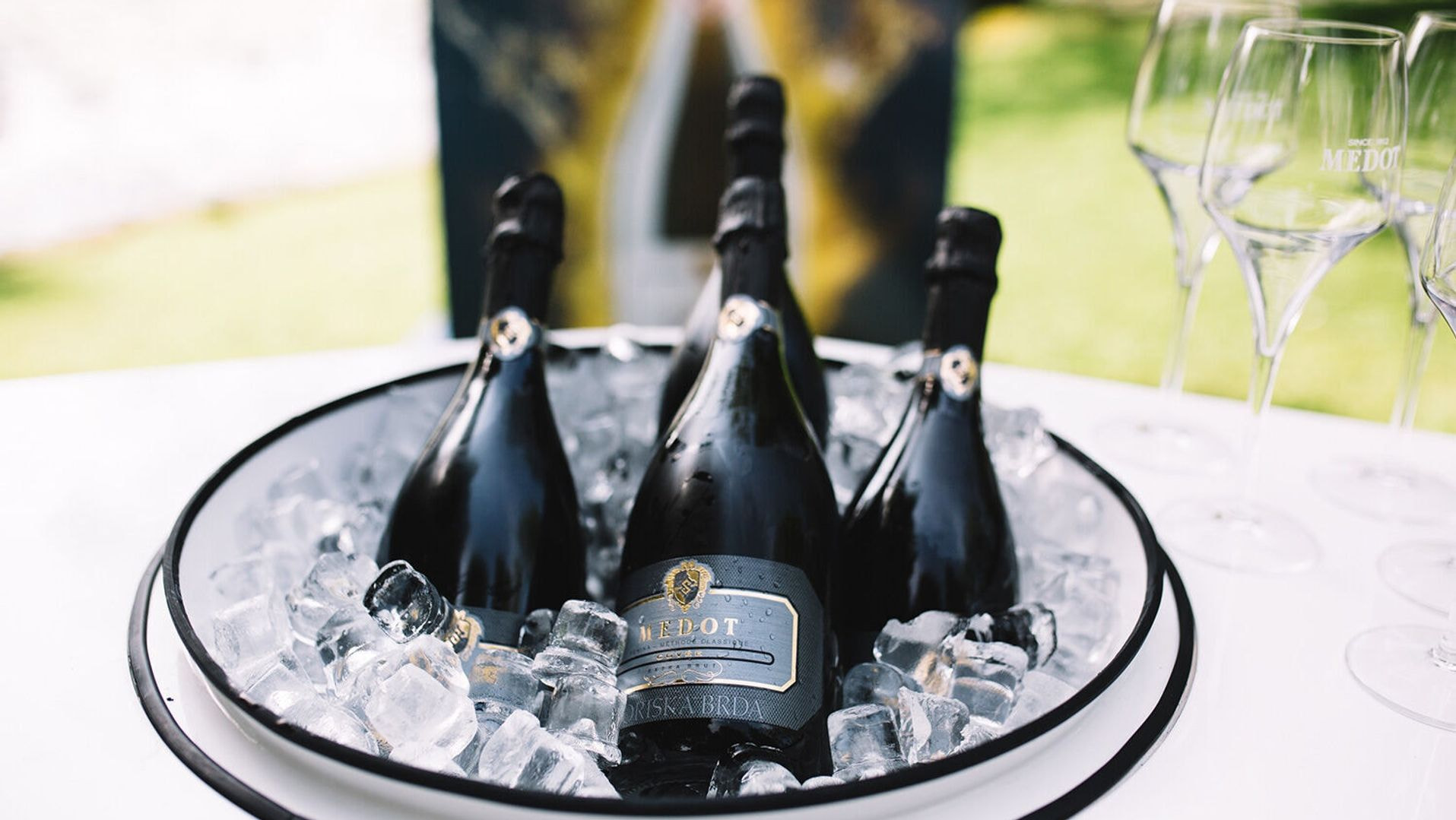
Fotografije: Manuel Kovšca in zasebni arhiv Medot Wines




